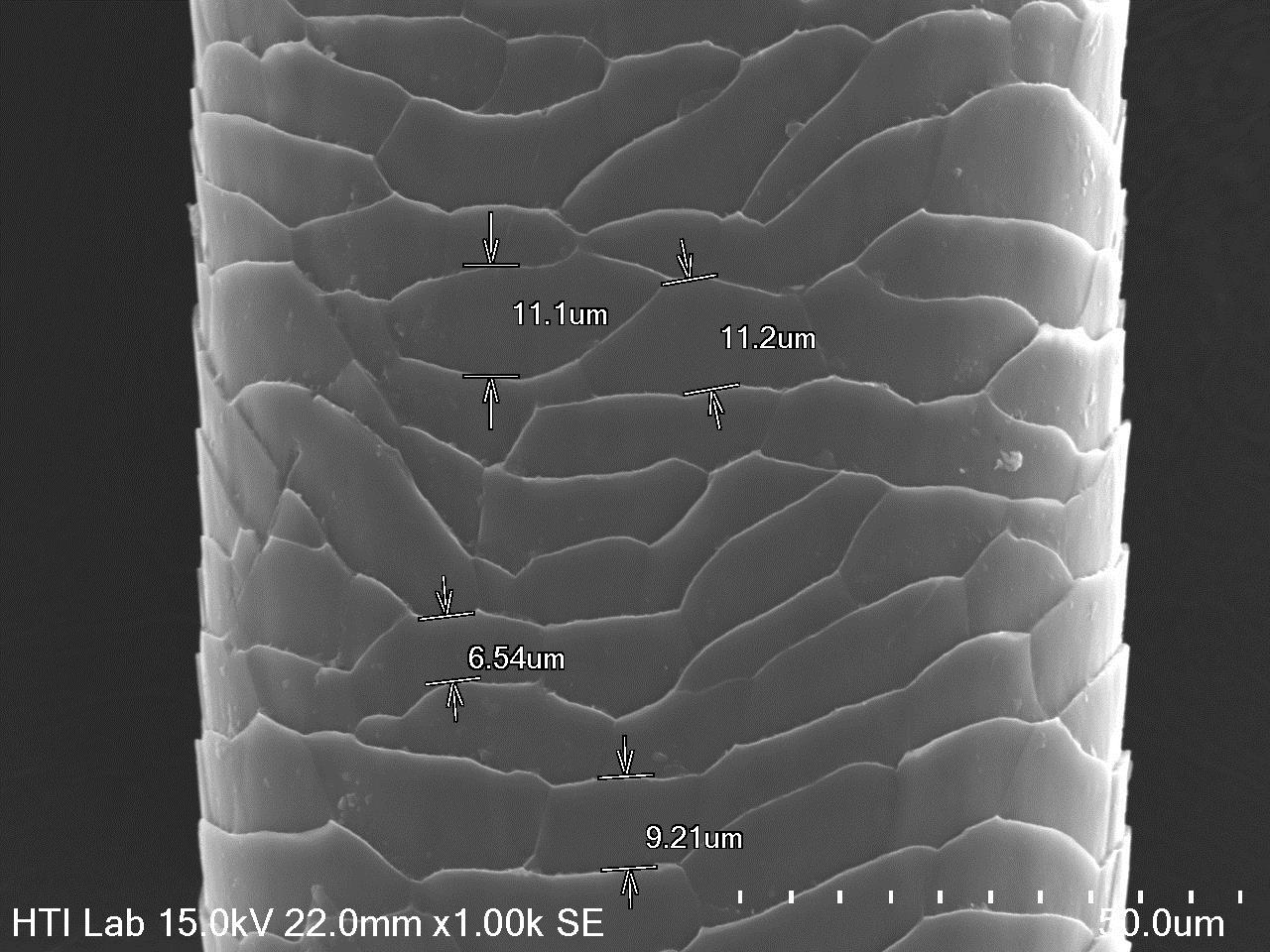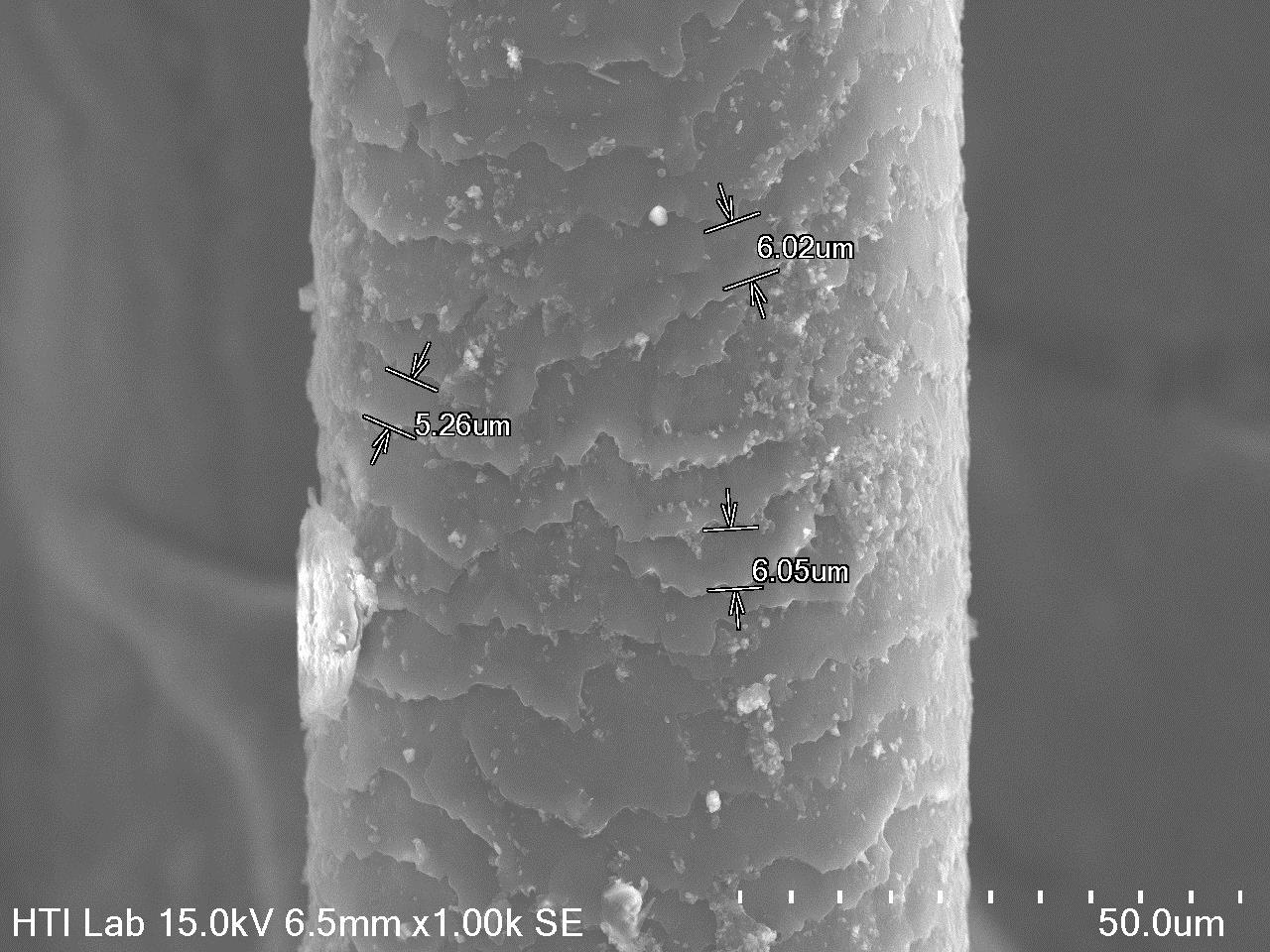IT-4-P-2413 Hair Cuticular Characteristics: Potential of Animal Identification in Primates Order
Hair is one of the common trace evidences in a crime investigation due to its easy shedding nature and could be easily transferred between surfaces or left behind at the crime scenes (1,2). Therefore forensic examination of hair sample plays a significant role in investigation of illegal wildlife-related crime cases (3,4). Four species of animals from Primates order were selected with their hair samples examined under scanning electron microscope. Species of Cercopithecidae family include blue monkey (Cercopithecus mitis), banded leaf monkey (Presbytis femoralis) and vervet monkey (Chlorocebus pygerythrus) (Fig 1) while chimpanzee (Pan troglodytes)(Fig 2) is from Homonidae family. Nol chemical or mechanical cleaning of hair examination was done. In Primates order, all species have same regular wave cuticular pattern but variation was seen in other features. Blue monkey and vervet monkey have smooth cuticular dorsal margin whereas banded leaf monkey and chimpanzee have rippled structure. Banded leaf monkey showed intermediate hair cuticular orientation and is the only species having this characteristic. Statistics analysis proved that average scale layer difference could be one of the criteria in examination of hair samples. Comparison showed average scale layer difference of chimpanzee is significant lower than blue monkey and vervet monkey. In Primates order, cuticular dorsal margin, scale position and scale layer difference could be employed to differentiate all four species of animal successfully (4). This study also proved that analysis of cuticular scales pattern and other related characteristics was not affected when conventional cleaning procedure was not employed. Present study indicates that it is possible that positive identification of animal species through hair samples examination using various measurements and examination of hair cuticular characteristics.
References
B. J. Teerink, Atlas and Identification Key: Hair of West-European Mammals, Cambridge: Cambridge University Press (1991).
M.S. Dahiya, S.K. Yadav, Elemental Composition of Hair and its Role in Forensic Identification, Open Access Scientific Reports, 2(4): 10.4172, 721 (2013).
M.S. Dahiya, S.K. Yadav, Scanning electron microscope characterization and elemental analysis of hair: a tool in identification of felidae animal, J Forensic Research, 4(1), 178, 4172/2157-7145.1000178 (2013).
H. Brunner, B.J. Coman, The Identification of Mammalian Hair, Melbourne: Inkata Press (1974).
The author acknowledged the contribution of hairs by the National Zoo of Malaysia

Fig. 1: Hair of vervet monkey |

Fig. 2: Hair of chimpanzee |